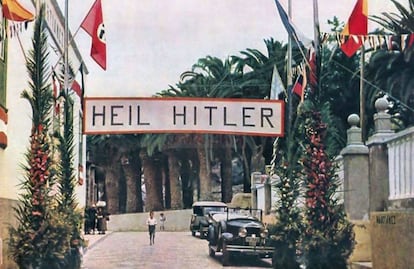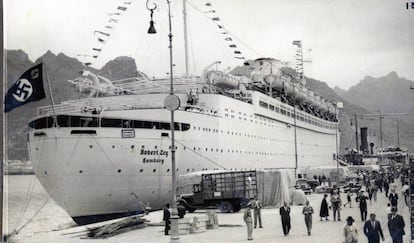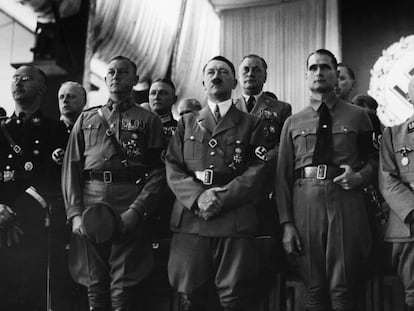When the Nazis were welcome in the Canary Islands
Newly published historical research confirms the German navy’s frequent presence in the Spanish archipelago between the two world wars


Between the First and Second World Wars, the Canary Islands became an obligatory port of call for German ships engaged in naval maneuvers. In fact, 70% of German ships dropped anchor in the islands’ ports while the other 30% sailed through their waters at some point.
A study by the historian José Miguel Rodríguez Illescas, titled The German Navy in the Canary Islands Between the Wars exposes little-known information about these military maneuvers and includes a previously unpublished collection of photos, from banners welcoming Hitler on the streets of Santa Cruz to warm welcomes by crowds of locals, to a gift of Tío Pepe sherry and cookies to departing German sailors, to an excursion to Mount Teide that came complete with a live band and dancing.
The German captains were entrusted with secretly assessing the German enclaves abroad
Having consulted documents from the German Embassy, the Canaries Intermediary Military Archive (AIMC) and the Canaries Historical and Cultural Military Center, Rodríguez Illescas points out that the German navy as a whole was never charged with genocide during the Second World War, though isolated figures within it were.
The historian explains that, as early as the 19th century, the Canary Islands were fundamental to Germany’s strategy of expansion into Africa. As such, they started to form part of a vital framework for commercial and military policy, with German sea traffic in the archipelago reaching its peak during the Third Reich. However, contrary to popular belief, there was no Nazi base actually built on the islands, says the historian, as this was prevented by the Allied forces.
Many of these same vessels were obliterated as the war drew to a close. “After 1945, most of them disappeared as a consequence of the different military campaigns in Norway, the Atlantic and the Baltic Sea, as well as the air raids by the Allies on the German ports and bases in Europe,” says the historian.

In October 1935, the Karlsruhe cruise liner docked in Tenerife and its captain Von Siemens invited the authorities on the island to a party while a zeppelin flew overhead amid general rejoicing. “There were civil and military authorities present, and also Alicia Navarro Cambronero, the first Spanish woman to be crowned Miss Europe,” says Rodríguez Illescas. The following day, Von Siemens read a telegram from Adolf Hitler to the crew ordering them to take down the German flag and replace it with the swastika.
The German captains were entrusted with secretly assessing the German enclaves abroad. “Some associations did join in the celebrations but many members of the Nazi party did not for racial or xenophobic reasons, as the men and women who married locals were thought to be undermining national socialism by mixing races,” says Rodríguez Illescas.
The Deutschland arrived in 1939 with two submarines – a U-27 and a U-30. The ship was waved off again with two bottles of Tío Pepe, half a kilogram of assorted cookies and three boxes of cigarettes, all of which cost 26 pesetas. This contrasted sharply with the welcome given to the Schleisen in November 1937. In this case, the crew was met again by civil and military authorities, music bands and by members of the fascist party Falange who greeted the German sailors by shouting “Heil Hitler!” three times. In return, the German sailors shouted, “Franco! Franco! Franco!” Two years later, World War II had begun.
English version by Heather Galloway

